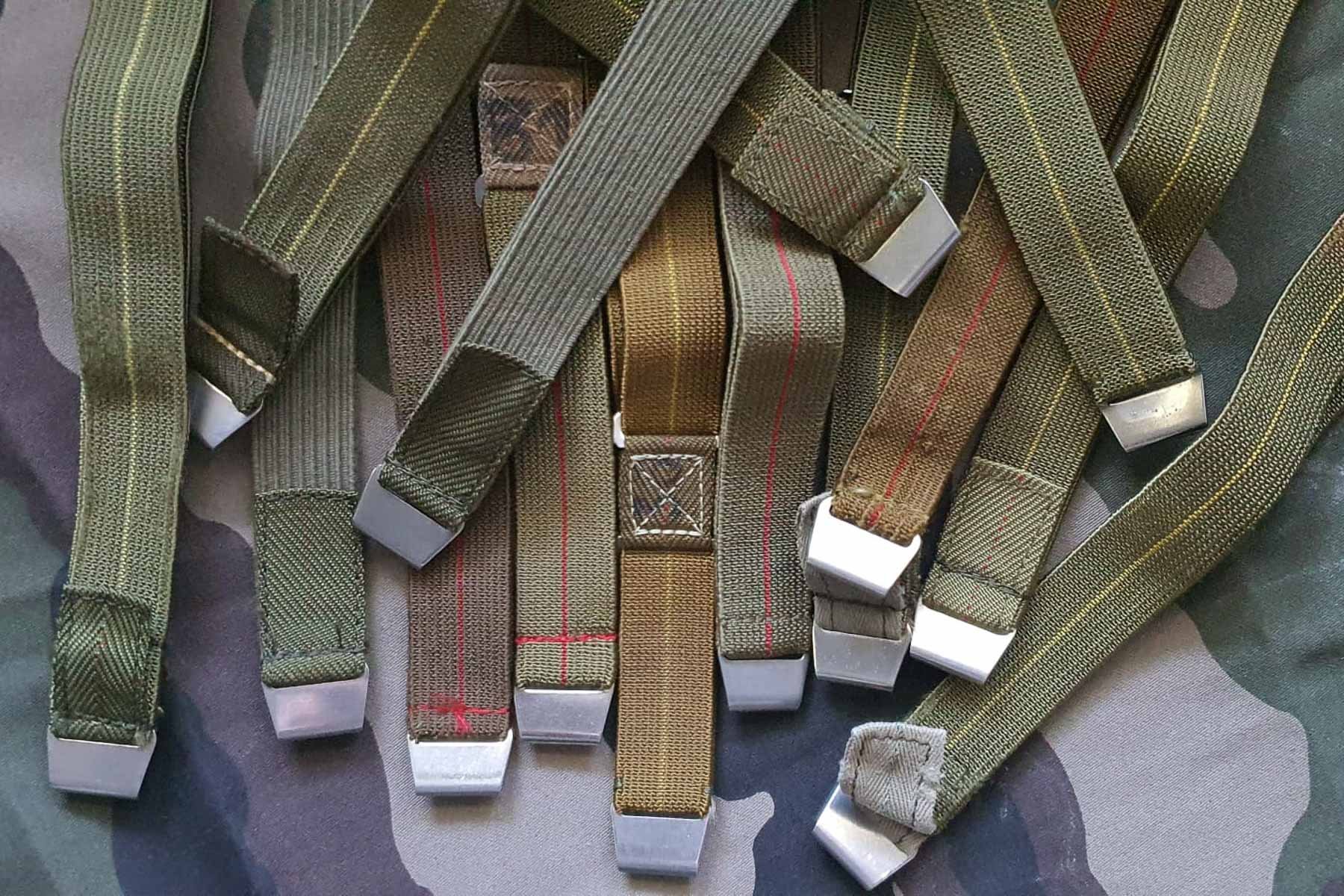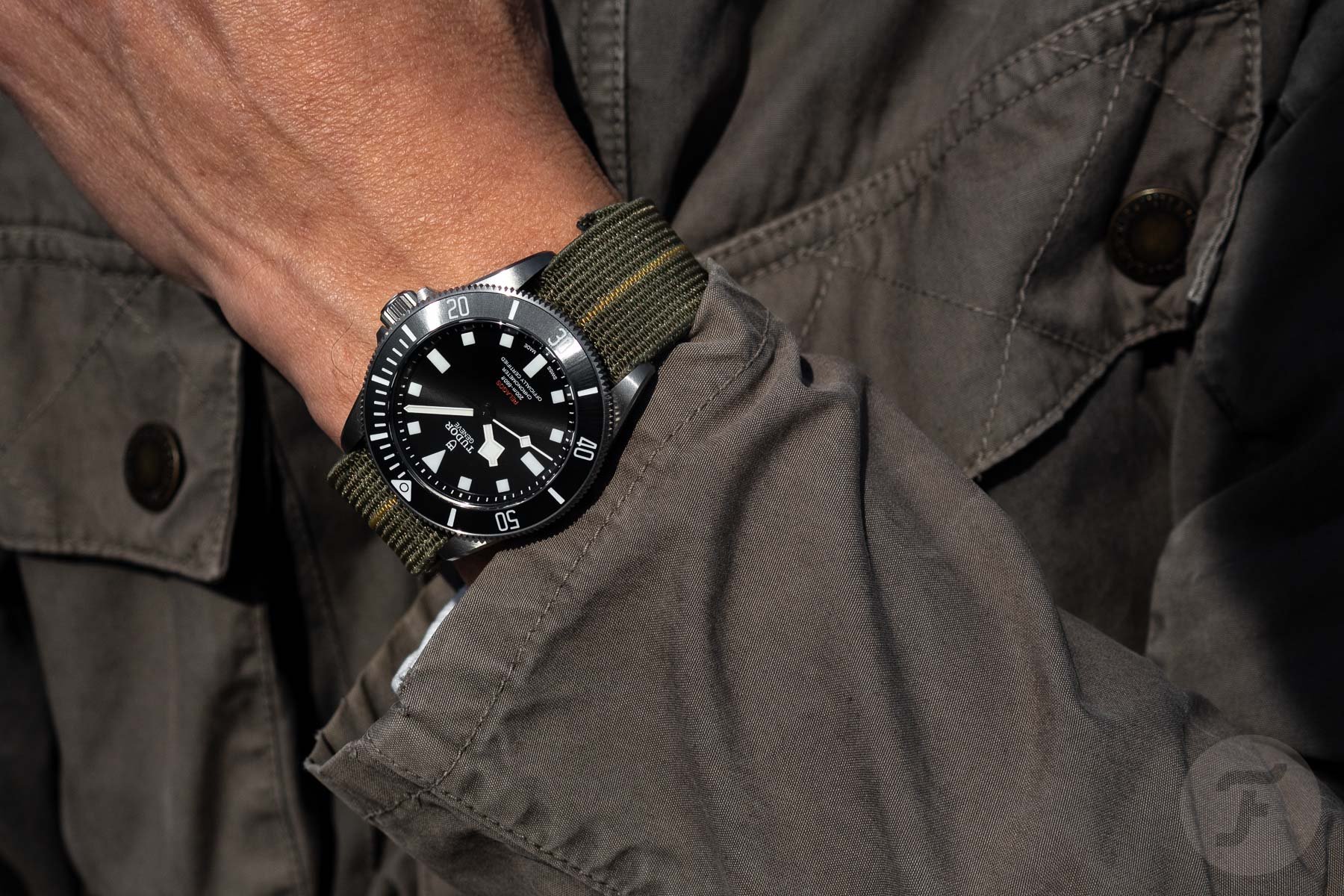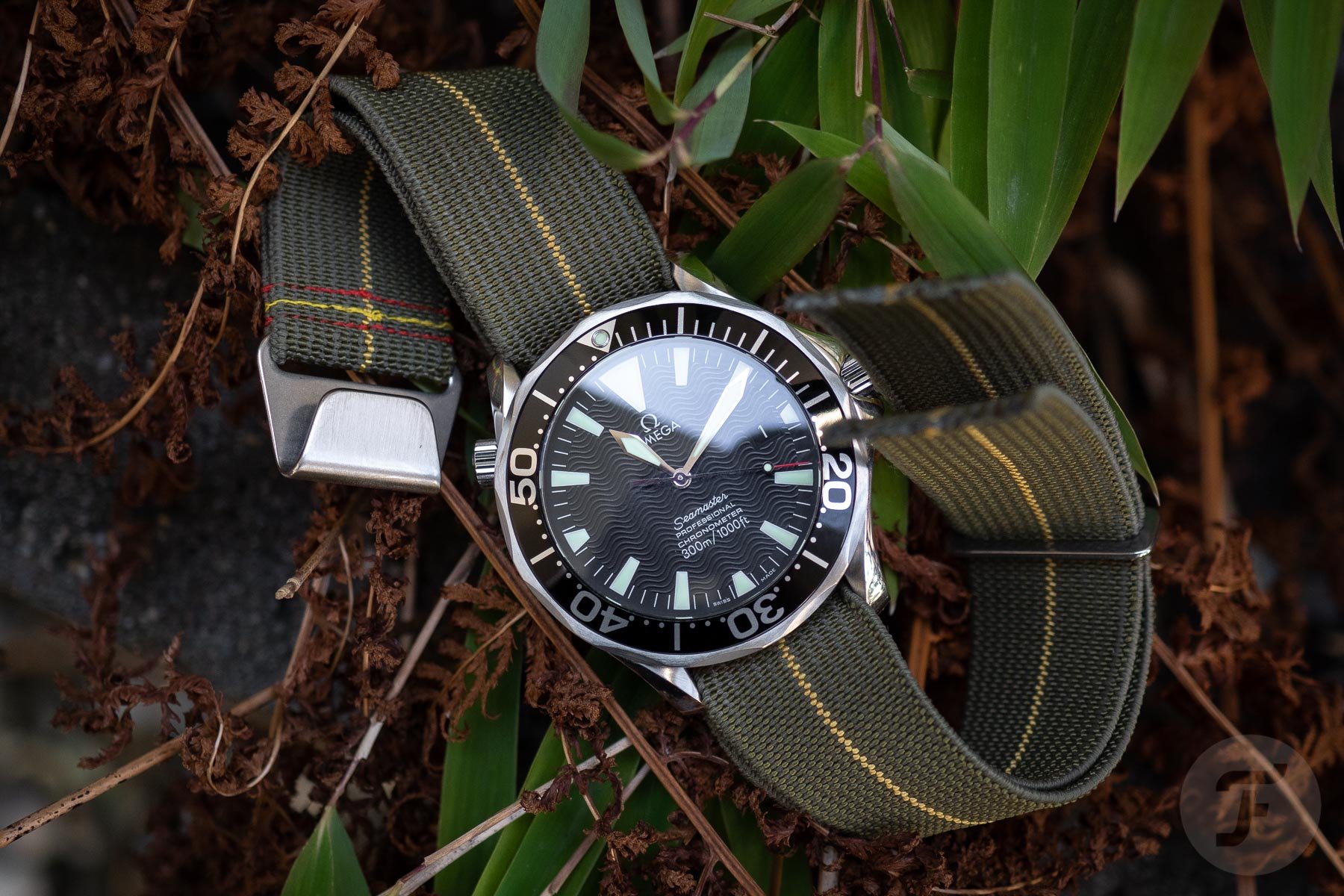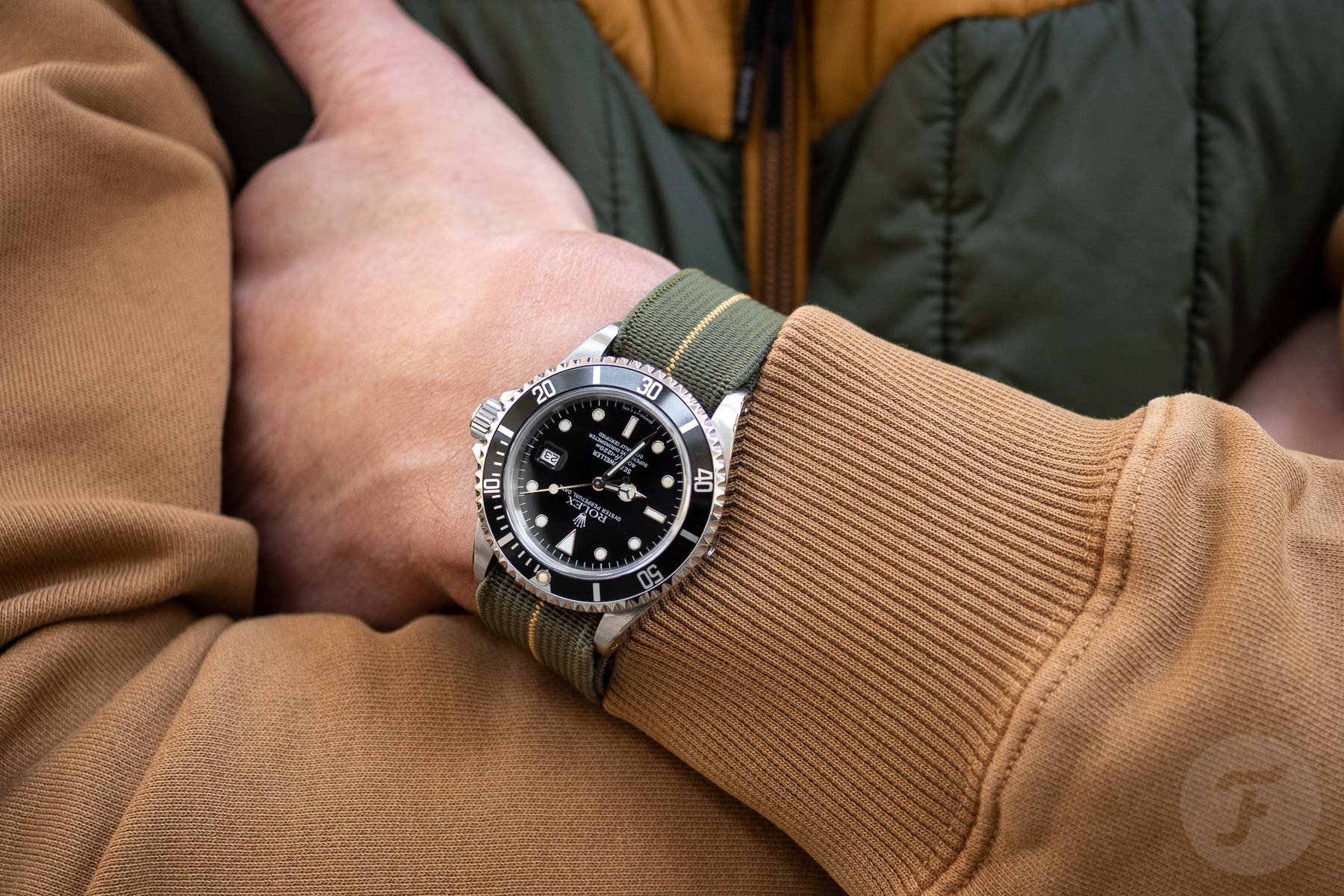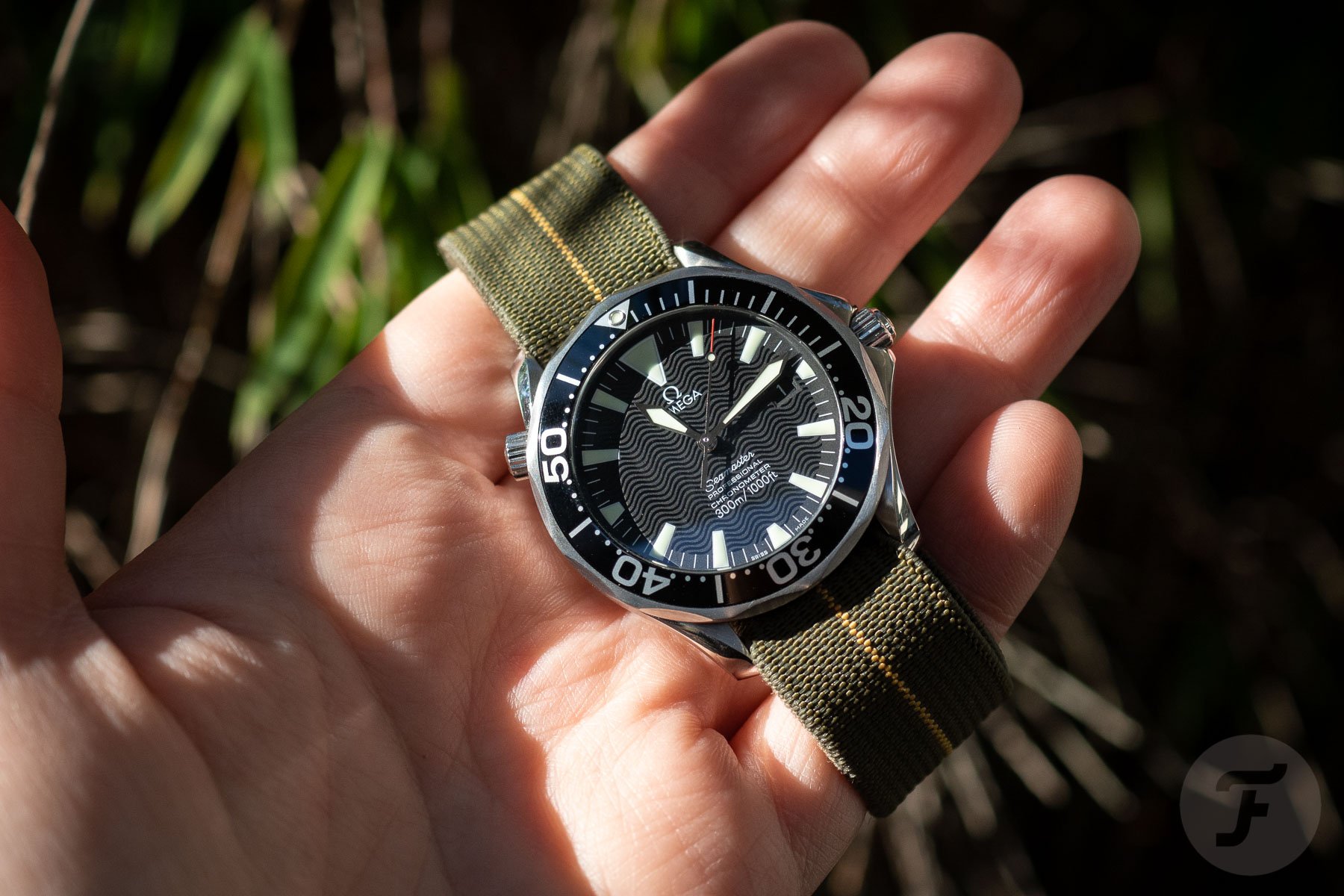NDC Straps — The Story Behind The Original Marine Nationale Parachute Elastic Strap
Over the last few years, elastic watch straps have gained mass popularity. They are available in almost every color imaginable and can be snapped up from several different sellers. Prices range from just a couple of bucks up to just below a hundred euros. If you’re reading this, there’s a good chance you own one of these straps. And there’s an even better chance that you’ve seen them cropping up, not just here on Fratello but also Instagram and some of the popular watch forums. But where do these straps come from? What’s the origin story behind a product that has become so ubiquitous in the watch enthusiasts’ space? To answer this question, I’ll be taking a closer look at one of the brands producing arguably the most authentic version of this watch accessory, NDC Straps.
Many brands sell them, and a handful is even bold enough to claim not just to sell the original but to own the idea behind this kind of strap. But the truth behind the origin lies in the name. Commonly known as the “Marine Nationale” strap, these straps were invented by the French Navy’s combat divers in the ’60s and ’70s. One of the brands responsible for popularizing the strap — our friends over at Erika’s Originals — refers to their product as the “MN strap” (a term now owned by the brand). Everyone’s favorite seller of affordable straps — CNS & Watch Bands — offers two takes on the strap, the “Marine Nationale” and the “Paratrooper.” These have slightly different constructions and attach to both your wrist and the watch in slightly different ways. Finally, NDC Straps, the brand we’ll focus on today, calls its strap the “Original.”
Necessity is the mother of invention
As with many watch accessories that we know today, the origins of these straps come from a simple necessity. And this necessity existed only in a very specific context. You see, most people buying a watch would rightly expect to receive both the watch and a means to attach the timepiece to their wrist. However, this was not the case with the watches issued to combat divers (also known as nageurs de combat) of the Marine Nationale. Many opted to purchase a strap made of woven nylon fibers, a material known as “nylon 6” or Perlon. You can find more information on Perlon and straps made of the material here. Their popularity can be explained by these straps being resilient, safe when one spring bar failed, and likely not that costly.
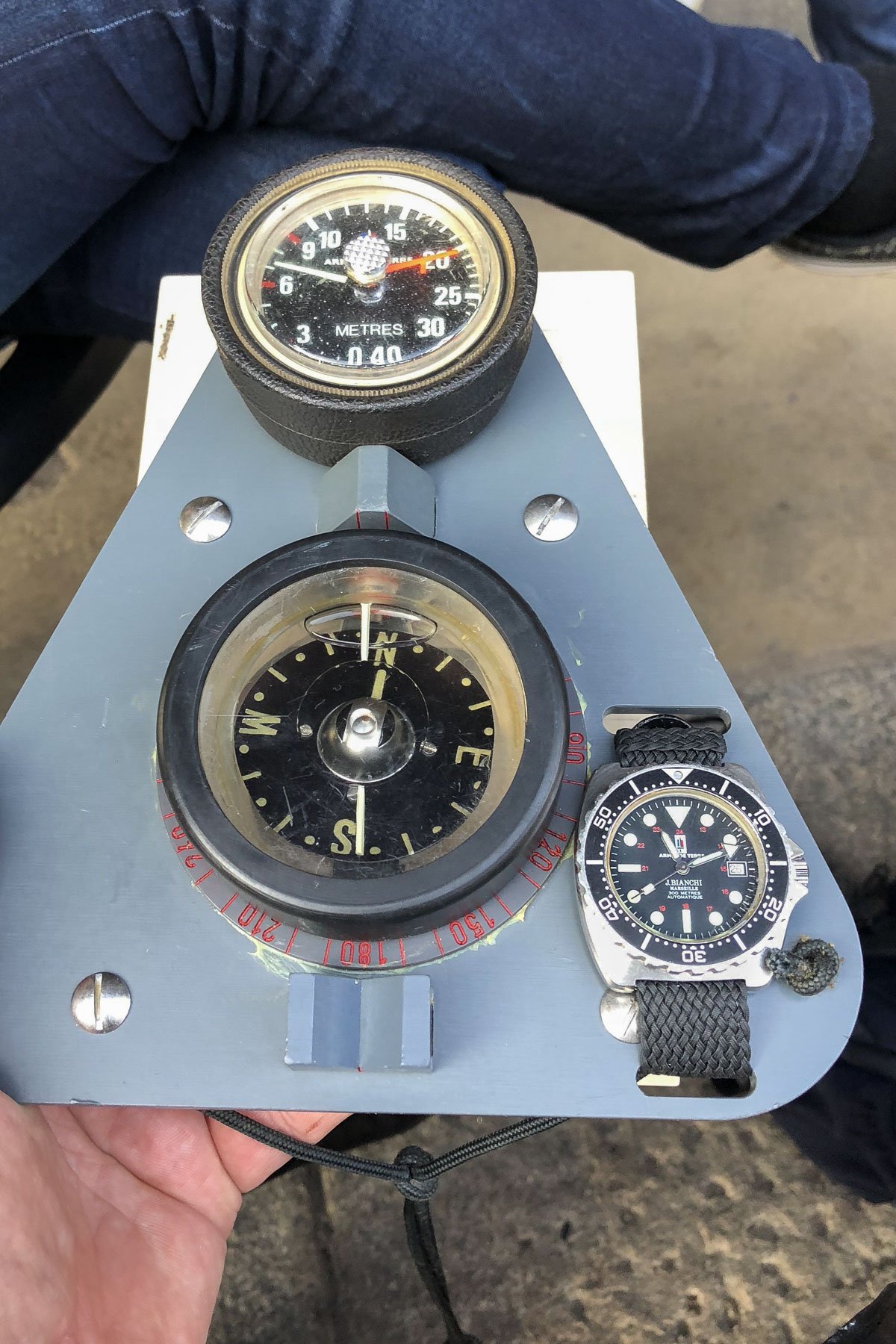
Image courtesy of Watchlvr on the Omega Forum.
They were a good fit for the watch most commonly issued to the divers, the Jacques Bianchi JB300, and were used to both wear the watch and strap it to their instrument boards (as seen above). Parallel to the Perlon-purchasing proponents was a different school of thought. These divers opted to spend their hard-earned francs elsewhere and crafted their straps from other issued equipment instead. The material of choice was the elastic straps used to fasten the bags containing their reserve parachutes. These crafty divers would cut a length of the elastic, pass it through the lugs, and stitch it into a loop. The material was flexible yet resilient, making for a comfortable fit on the wrist and over a wetsuit. There were several versions of the material, but the most common was a khaki-green elastic with a yellow stripe running down it lengthways.
NDC Straps — Military heritage, utilitarian fascination
There’s an undeniable influence of all things military in our daily lives. A bomber jacket, a pair of boots or sunglasses, a vehicle… The list goes on and on. So it’s no surprise that this influence led to the popularization of military-style watches and their corresponding straps. If you think about it, many watches owe a lot of their popularity and design to their military heritage. Think about the Type 20 pilot’s chronograph. Or how about the evergreen classic that is the Hamilton Khaki Field? Field watches in general go back to the watches on soldiers’ wrists during WWII — think about the famous Dirty Dozen watches. Military dive watches, such as those made by Rolex, Omega, Longines, Blancpain (and many more), are also extremely popular. For more details on military watches, I recommend this excellent article by Oren Hartov for Gear Patrol.
It’s not only watches that owe much to their military roots; straps do too. Pilots have the Bund strap, ground troops the NATO, and divers have the Marine Nationale strap. And despite there being as many brands selling these straps as there are fish in the ocean, one thing sets NDC Straps apart. This is the simple fact that these straps are made of the same type of elastic used by the Marine Nationale. Whether new old stock or new, the material comes from the same providers used by the French Navy. In my opinion, this gives the straps a heightened sense of authenticity. The brand’s credibility was enough to warrant Tudor ordering several straps made in the original spec for its boutique displays, the first of which is in the Tudor boutique in Glasgow.
Perfected over time
NDC is owned and operated by watch enthusiast Matthew Jackson. He has offered several different straps made with various authentic materials, including some rare NOS elastics. He provides some personalization to the straps, including stitching and various hardware options. The straps’ design has been refined over the years, surpassing the basic stitched loop. There’s evidence that this innovation has its roots in the hands of the combat divers themselves. You’ll notice that NDC’s hardware is practically identical to the metal elements on the parachute bag pictured earlier. Essentially, a long strip of elastic material is folded over itself at the halfway point. Here, the metal hook is stitched into place. A metal loop is fitted over both loose ends, providing an anchor for the hook. The loop slides freely along the strap’s length, making it easy to adjust for a perfect fit.
It should go without saying that personalization is not just possible; it’s encouraged. Personally, I cut my strap down only a little bit, leaving as much of the material intact as possible but avoiding any section where too many layers overlap. My colleague Dave Sergeant also owns a couple of these straps, and he opts to modify his more extensively, reducing the overlap to a minimum. The elastic material feels military indeed. It’s rugged and has just enough give to make it comfortable without feeling flimsy. Due to it being a material not initially intended for this use, it’s a hair over 21mm wide. This means that it can squeeze into 20mm lug gaps without looking awkward and will also suit 22mm gaps nicely. It is also perfect for the Tudor Pelagos 39’s 21mm lug spacing. Owning at least one NDC strap is mandatory if you own that watch.
Final thoughts
After two and a half years of owning and wearing my NDC strap, I find it hard to fault. In fact, it’s holding up exceptionally well. Previously, my only criticism of the brand was that you could only buy the straps through WhatsApp, then later Etsy. Now it’s as easy as going to the new NDC Straps website, where you can browse the entire catalog of straps and merchandise. The original strap will set you back £60 (approximately €69) plus shipping. This puts it within the realm of what’s reasonable for a watch strap. But considering that this is the only brand using the original material, the price is a steal.
I hope you enjoyed learning more about the origins of the parachute-elastic straps and the brand making the best/most authentic ones out there today. If you want to learn more, here is a more comprehensive look at the straps.
Now the time has come for me to ask you for your take. Do you own one of these brilliant straps? Do you enjoy wearing it? What’s your preferred way to wear it? Leave your thoughts in the comments below.
Follow me on Instagram @ncgwatches

